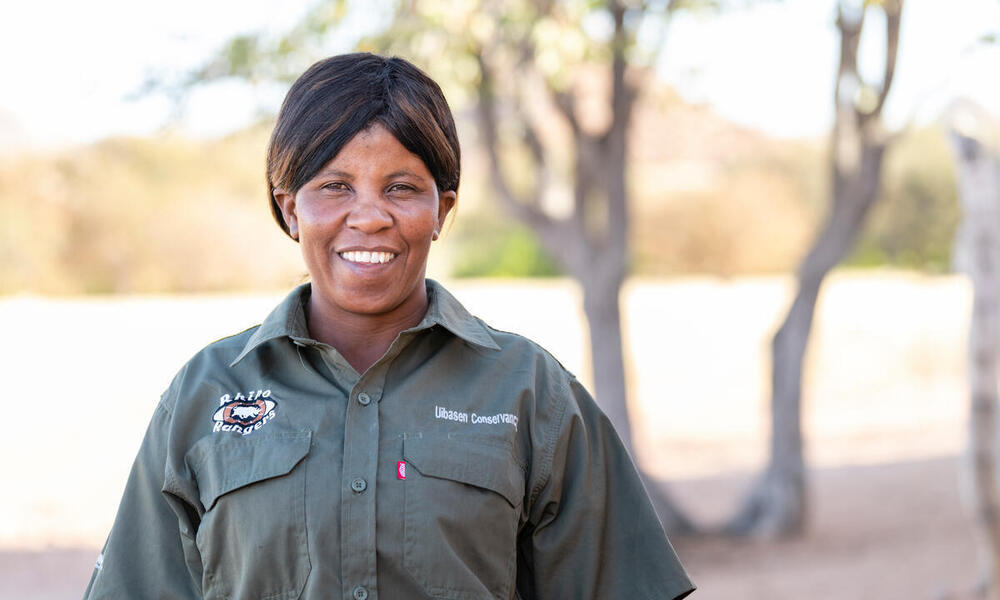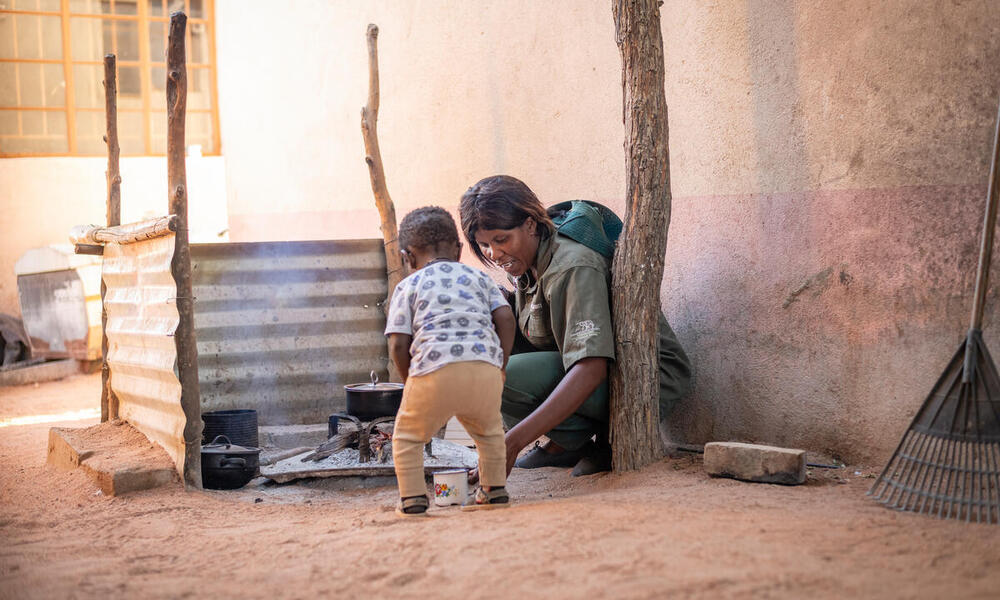The "desert-adapted" black rhinos in Kunene are the only truly wild black rhino population remaining in the world, living on unfenced communal lands and outside of national parks. The rhinos survive in the rugged, dry landscape, under a scorching sun. Here, they feed on the ubiquitous euphorbia bushes, toxic to the touch for humans. Lions and elephants roam the landscape too. Yet, soft-spoken Erlyn thrives here. "As Damara-Nama, our upbringing is in nature. You learn to live from the land at a young age," she said.
Incredibly, when Erlyn applied to be a rhino ranger, she'd never actually seen a rhino. Yet she developed a fascination for the species by listening to stories about rhinos from rangers in her community. She also needed a job; there are few opportunities in these remote parts of Namibia. "I was scared at first, but now I can do anything another ranger can do," she says proudly.
Rhino Rangers like Erlyn are salaried employees of conservancies. Save the Rhino Trust and its partners Integrated Rural Development and Nature Conservation and Namibia Nature Foundation provide the rangers with food and equipment and logistical support vehicles. When the program started in 2012, most candidates were men. Today, around 60 rhino rangers operate in 13 conservancies, and six are women.
"I am the sole breadwinner," says Erlyn, admitting that it's a struggle to leave her kids for long periods. It's also hard to stretch her salary to cover her monthly responsibilities, which extend to financially supporting her mother, siblings, and nieces and nephews. Her hopes and ambitions for the next generation are modest - education and the opportunity to support themselves. Job creation linked to conservation remains the goal of many of Namibia’s conservancies.


